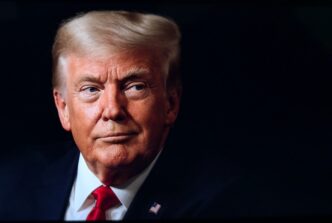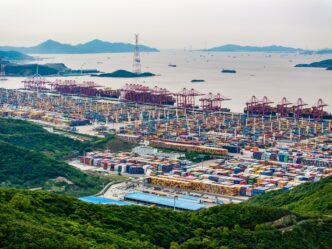The trade tensions between the United States and China have escalated once more as new tariffs come into play. China’s latest move aims to counteract U.S. tariffs that target Chinese imports with a 10% duty. The global economic landscape braces for impact as these changes unfold. Experts suggest that the ripple effects could be far-reaching and long-lasting.
China’s response, announced by Beijing, imposes tariffs on various American imports, including fuels and machinery. These measures are a direct counter to the Trump administration’s latest actions. The trade war rages on, with both nations steadfast in their positions. The implications for global trade dynamics are significant and complex, affecting businesses and consumers alike.
Beijing’s Strategy
Beijing’s decision to impose tariffs is a calculated response. By levying a 15% tax on coal and liquefied natural gas, alongside a 10% tariff on crude oil and agricultural machinery, China aims to pressure the U.S. economically. This strategic maneuver seeks to maintain balance and assert control within the turbulent trade environment.
The newly announced tariffs by China’s Ministry of Finance highlight key economic sectors. These include energy and automotive industries, showcasing targeted strikes on influential American markets. Furthermore, by doing so, Beijing hopes to stimulate domestic growth and lessen dependency on U.S. imports.
The timing of these measures aligns with the recent U.S. 10% tariffs on Chinese goods. China’s announcement came just after these U.S. tariffs took effect, signaling a prompt and decisive counteraction. This tit-for-tat strategy underscores ongoing tensions and uncertainty in international commerce.
Impact on Energy and Industrial Sectors
China’s tariffs on energy products like crude oil and liquefied natural gas are significant. The energy sector is vital, and these tariffs could lead to increased costs for American companies relying on Chinese markets.
As the tariffs target agricultural machinery, the ramifications extend to U.S. manufacturers. Large-displacement cars and pickups are also affected, placing additional strain on American automotive exports. The broader industrial impact could be substantial.
This action is a clear signal of China’s intention to protect its industries while inflicting economic pressure on the U.S. Firms in both nations may face challenges in maintaining profitability amid these heightened trade barriers.
Tungsten and Tellurium Export Controls
The export controls on tungsten-related materials mark a new phase in China’s economic defense. Often used in industrial and defense applications, these materials are crucial in advanced manufacturing.
Tungsten and tellurium are key resources in technology and renewable energy sectors. China’s restrictions on these materials could slow technological advancement and impact global supply chains. This adds another layer of complexity to the trade conflict.
For industries relying on these materials, alternative sourcing strategies must be developed. China’s control over tungsten exports could provide leverage in trade negotiations. As such, international stakeholders are keenly assessing the repercussions.
World Trade Organization (WTO) Complaint
China’s response includes filing a complaint with the WTO. This move signals China’s commitment to defending its trade rights within international frameworks.
The WTO complaint reflects China’s strategy of combining direct economic measures with legal challenges. This dual approach aims to bolster its standing and safeguard its interests.
The implications of this legal action could affect broader trade relations. Nations worldwide are watching closely, understanding that the outcome may shift the balance of global trade norms.
Broader Economic Implications
The tariffs and export controls reflect deeper economic tensions. These measures are likely to influence global supply chains, affecting multiple industries worldwide.
As businesses navigate the new tariffs, adaptation strategies are essential. Some may look to diversify supply sources, while others focus on cost absorption and operational shifts.
The broader economic landscape could see shifts in cooperation and competitiveness. Countries may reevaluate trade partnerships in response to these ongoing U.S.-China disputes.
Potential U.S. Economic Challenges
For the U.S., China’s tariffs present additional economic hurdles. Affected industries require strategic planning to mitigate adverse impacts.
U.S. businesses must consider expanding into other markets to offset losses in China. Innovation and efficiency improvements could prove vital in maintaining competitive edges. The path forward involves careful assessment and strategic pivoting within impacted industries.
With these tariffs in place, some companies could face reduced profit margins and market share losses. How U.S. businesses respond will be critical in shaping future economic stability.
Global Trade Dynamics at a Crossroad
The trade conflict highlights emerging complexities in global commerce. Countries may increasingly adopt protectionist measures, altering established trade norms.
While some view these measures as necessary, others are concerned about potential economic isolation. The debate continues over how best to engage in international trade amidst rising tensions.
The global trade system is at a pivotal juncture, where cooperation and conflict coexist. How nations navigate this landscape could define future economic relations.
Ripple Effects on Consumers
Consumers are likely to feel the effects of these trade measures through price changes. As tariffs elevate costs, businesses may pass these increases to consumers, impacting daily expenses.
As companies adjust pricing structures, consumer choices could shift towards cost-effective alternatives. This adaptation reflects broader economic trends spurred by ongoing trade disputes.
Overall Market Sentiment
Market reactions to the growing tariffs are mixed. Some analysts predict volatility, while others see opportunities for growth despite challenges.
Investors are cautious, balancing risks with potential gains in an unpredictable market environment.
The escalating trade measures between the U.S. and China cast a long shadow over global markets. These actions mark a significant chapter in international trade history, with far-reaching consequences. As both nations remain firm in their approaches, the world watches to see how this economic conflict unfolds.








